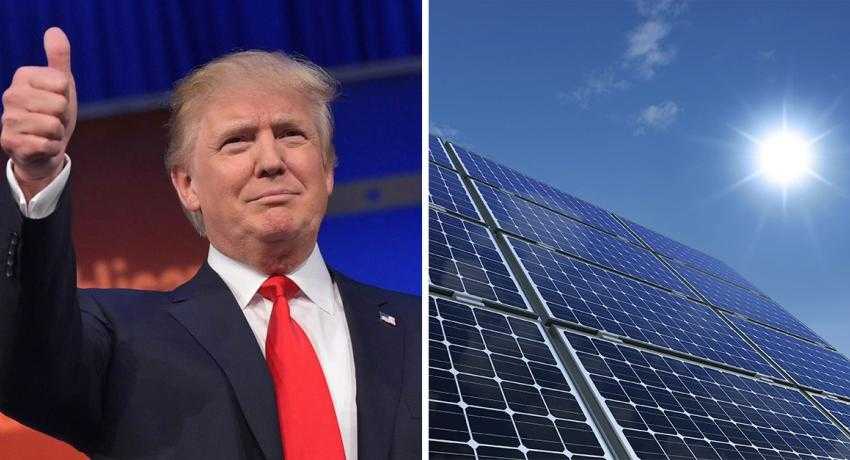In a surprising turn of events, the implementation of tariffs by former U.S. President Donald Trump has inadvertently accelerated the development of renewable energy. While these tariffs were initially perceived as potential obstacles to green energy initiatives, they have, in some cases, acted as catalysts for innovation and growth within the renewable sector.
Understanding the Trump Tariffs and Their Initial Impact
In April 2025, President Donald Trump announced the implementation of reciprocal tariffs, imposing a minimum of 10 percent on imports, with certain countries, including Indonesia, facing tariffs as high as 32 percent. This move was aimed at promoting domestic production and addressing trade imbalances. However, it raised concerns about potential disruptions in various sectors, including renewable energy.
The renewable energy industry, heavily reliant on a global supply chain for components such as solar panels and wind turbines, faced the prospect of increased costs due to these tariffs. Analysts warned that higher import duties could lead to increased prices for renewable energy projects, potentially slowing down the transition to cleaner energy sources.
The Unexpected Acceleration of Domestic Renewable Energy Initiatives
Contrary to initial concerns, the tariffs have prompted several positive developments within the renewable energy sector:
- Boost in Domestic Manufacturing: To mitigate the impact of tariffs on imported components, companies began investing in domestic manufacturing facilities. This shift not only reduced dependency on foreign imports but also created jobs and stimulated local economies.
- Innovation in Renewable Technologies: The increased costs associated with imported components spurred innovation as companies sought cost-effective alternatives. This led to advancements in renewable technologies and the development of more efficient production methods.
- Diversification of Supply Chains: Businesses started exploring alternative markets and suppliers to reduce reliance on countries affected by the tariffs. This diversification enhanced the resilience of the renewable energy supply chain.
Case Studies: Positive Outcomes in Renewable Energy Development
Several instances illustrate how the tariffs have inadvertently benefited the renewable energy sector:
- Solar Panel Manufacturing in the U.S.: In response to the tariffs, several solar companies announced plans to establish manufacturing plants in the United States, aiming to produce solar panels domestically and avoid import duties.
- Wind Turbine Production Expansion: Wind energy companies increased investments in local production facilities, leading to a surge in domestic manufacturing of wind turbine components.
Challenges and Considerations
Despite these positive developments, the tariffs also presented challenges:
- Short-Term Price Increases: Initially, the tariffs led to increased costs for renewable energy projects due to higher prices for imported components.
- Market Uncertainty: The abrupt implementation of tariffs created uncertainty in the market, affecting investment decisions and project timelines.
Conclusion
While the Trump tariffs were initially viewed as a hindrance to renewable energy development, they have, in some respects, acted as an unintended catalyst for growth and innovation within the sector. By prompting investments in domestic manufacturing, encouraging technological advancements, and diversifying supply chains, the tariffs have contributed to a more resilient and self-sufficient renewable energy industry. As the global community continues to prioritize sustainable energy solutions, these developments underscore the complex interplay between trade policies and environmental objectives.
Read More






 Wednesday, 03-12-25
Wednesday, 03-12-25







